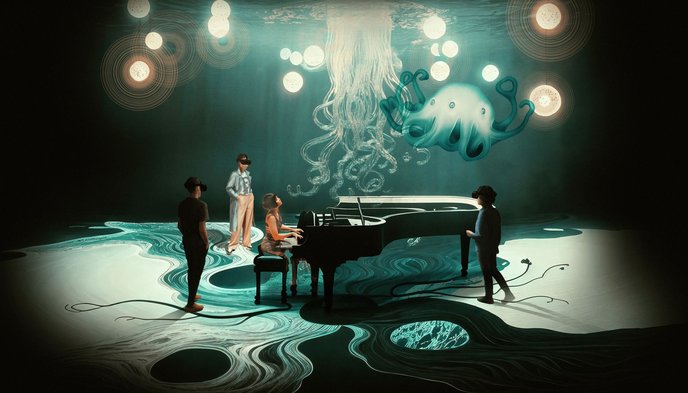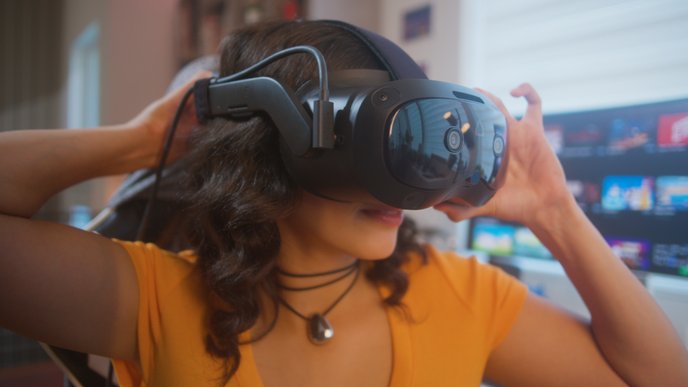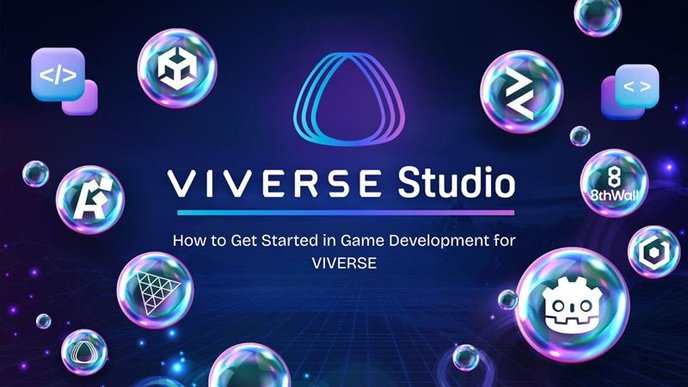Interview: The Pioneering Journey of XR Dreamland and How Kaohsiung Film Festival Became the Leader of Asian XR Film Festivals?
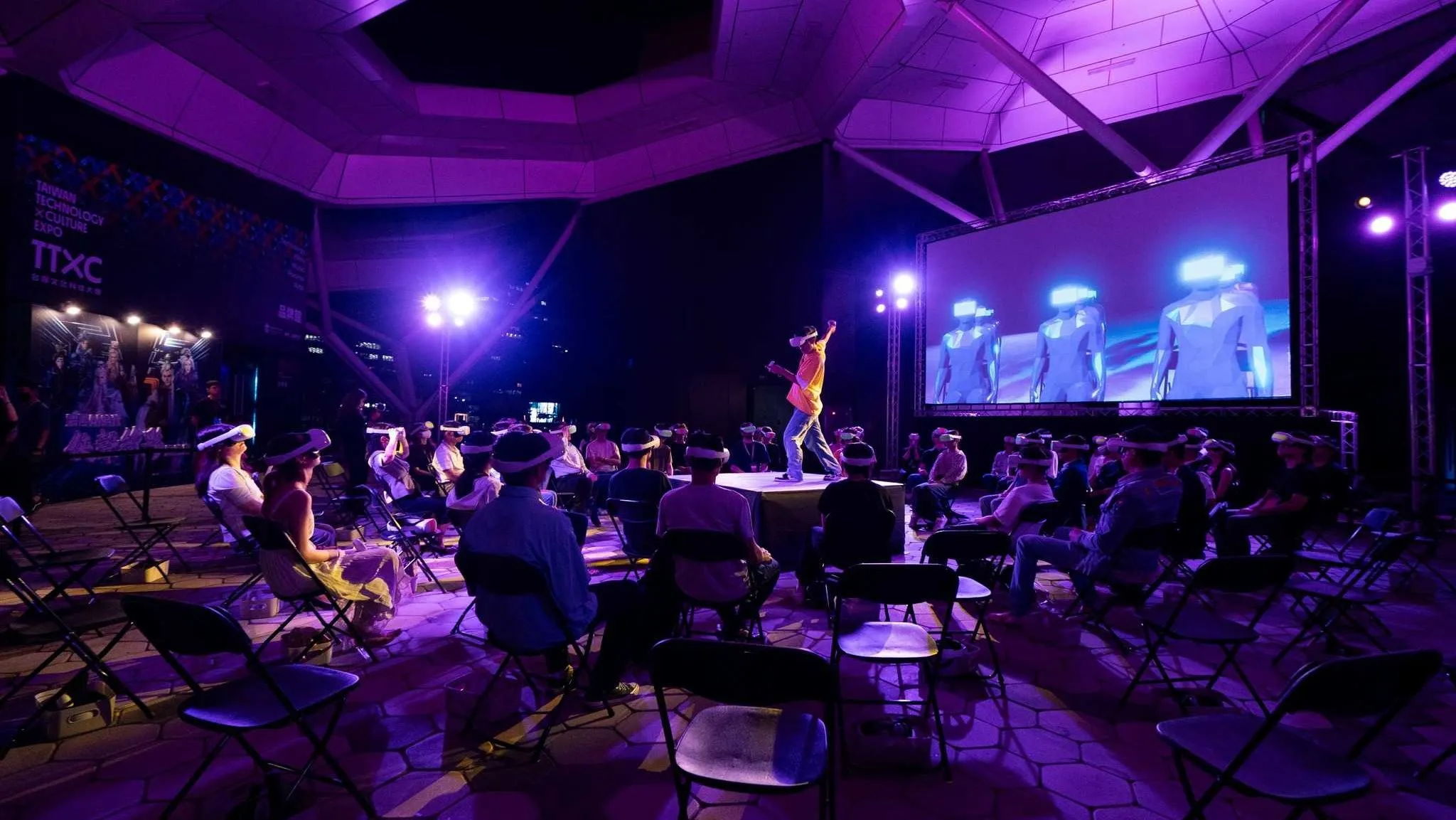
Extended Reality
20-minute read
In Kaohsiung, a group of passionate dreamers have come together to create the largest XR film festival in Asia, the "XR Dreamland." You will be amazed by the rich selection of international works and their talented creators, all gathered together at the Kaohsiung Harbor. This festival includes not only competition films going head to head with one another, but also outstanding local Taiwanese works, sponsored by the VR FILM LAB, the group that supports projects from conception through to production and promotion, and have regularly produced winners at international film festivals. The team here visited Kaohsiung and not only experienced the exciting works shown at the festival, but was also able to have an in-depth discussion with program planner Shang-Chiao, and discussed the magic of XR Dreamland.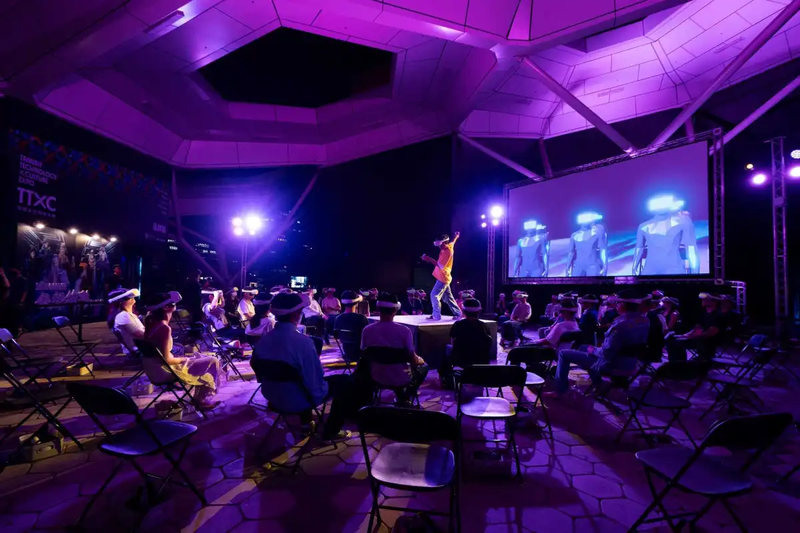 XR Infinite Fantasy "Free Your Mind" viewing scene. (Source: Kaohsiung Film Festival)
XR Infinite Fantasy "Free Your Mind" viewing scene. (Source: Kaohsiung Film Festival)
Question: The XR film festival must receive a lot of submissions every year. As a program planner, what do you value the most when selecting works?
Actually, every year we capture the trends in technology, which is very important for us. If there are works that successfully combine new technology with interesting stories, we will definitely consider them for selection. Of course, there is a separate process for competition films. We invite external and internal judges from the Kaohsiung Film Archive when making the initial selection, and for the final selection, we have final judges to make the decision. In addition to competition films, we also select some works ourselves. As I mentioned earlier, our main focus is on technological trends or content that we find to be unique and think must be introduced to Taiwanese audiences, so we recommend them in this section for everyone to see.
Question: Since there are already large-scale film festivals like the Venice Film Festival and events like SXSW that allow creators to freely showcase their work, what is the positioning and uniqueness of Kaohsiung Film Festival's XR Dreamland?
Currently, when we mention A-level XR film festivals, Venice is undoubtedly the first choice because they have the largest number of works. They usually hold their festival at the end of each year, and thus they become a good indicator for the technology and content trends for the following year. Next is SXSW, which is held at the beginning of each year and is more like an exhibition or trade show. At SXSW, creators showcase their works directly on-site, which is different from the more classical film festival style of Venice. SXSW's works are usually purposely more lively, entertaining, and interactive. Venice, on the other hand, prefers more contemplative and artistic works. There is also the Tribeca Film Festival, which leans more towards animation. But I think Tribeca is still searching for its direction because SXSW and Venice have already established their own distinct styles and characteristics. In comparison, it becomes relatively difficult for other film festivals to find their own uniqueness. Especially when there are no more than 50 high-quality XR content works each year, these works will basically tour major film festivals worldwide. Therefore, there is a high overlap among these works, and for curators, it is a big challenge to determine the curatorial direction and selection. Especially when Venice and SXSW are the leaders in this field and usually require works to be premieres. So when these works come to Kaohsiung, most of them can only have their Asian premiere.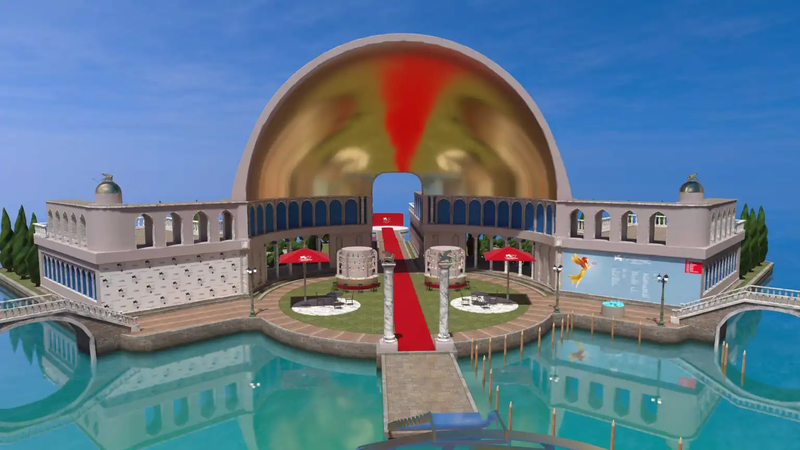 VRChat held the 2023 Venice Immersive VR Exhibition (Source: La Biennale di Venezia)
VRChat held the 2023 Venice Immersive VR Exhibition (Source: La Biennale di Venezia)
Speaking of the entire XR industry, Europe and the United States are certainly the leaders. In Europe, the Venice Film Festival is the leader, and in the United States, SXSW is the most representative. In Asia, the XR Dreamland is already the largest in scale. We have noted that other smaller events like the Bucheon International Fantastic Film Festival in Korea or the Beyond the Frame Film Festival in Japan do not host film competitions. Aspects unique to the Kaohsiung Film Festival is that we provide comprehensive services for our creators, such as regular screenings in VR experience theaters, financial support and guidance for creators, as well as support for subsequent distribution and promotion. For example, we have a residency collaboration with the Newimages Festival in France. For Taiwanese creators who are just starting out, we have people who continue to assist them reach their audience internationally. We provide them guidance on which film festivals to submit their works to, which venues can accept their works, and what potential partnerships and collaborations their works can explore in the future. It's not just about finishing at one festival and then being done with it. For example, director Chou Tung-Yen's work "In the Mist" was later screened at a high-end spa in a foreign country, which was quite interesting. In fact, we have received visits from industry professionals from all over the world who are very curious about how we manage such venues. Because even in Europe or the United States, they may not have this operation model.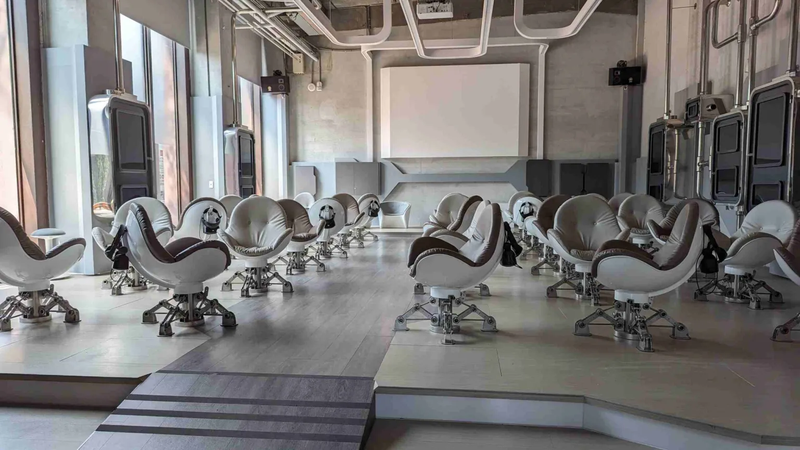
Question: What are the differences between this year's program and previous years? What new technologies and narrative trends have you observed in the curatorial process?
The biggest difference between this year's program and previous years is the significant advancement of sensory technology. The technology has crossed a new threshold. Therefore, there are more interactive works and works with large-scale movements this year, even incorporating light and sound effects using more mature technologies such as light sensitivity and sound detection. With the maturity of these technologies, many creators have started to challenge more sensory interactive combinations, and the storytelling has also become more mature. This is a clear trend we have observed in the curatorial process this year. Compared to previous years, the past works may have been more experimental and imaginative, but they still left a deep impression because they were constantly trying to break boundaries. However, this year's works appear more confident and less unconventional.
(Question: Or is it that creators may be more oriented towards the general audience?)
I think there is a possibility of that because I think in the past few years, people may not have thought about where to take their works after completion. After a few years of accumulation, creators will gradually consider the market and where their subsequent works will go, so they have clearly been producing content tailored to their own audience. This is different from the past way of creating.
Question: There are many clever arrangements in the exhibition this year, such as recreating the BAR scene from “Missing 10 Hours VR" Can you share more about that? (This interview was conducted before the opening of the festival)
We will design interesting exhibition booths based on the characteristics of each work to attract the attending audience. This year, all of our original works have unique exhibition designs. For example, the Taiwanese original work "Dora" will have its own dedicated space in the main venue, presenting a Freudian-style exhibition space combined with an AR experience. In the VR experience theater, there will be a special exhibition area where you can scan with your phone to see more hidden content. Director Hsieh Wen-Yee's work "LIMBOPHOBIA" will have its own unique, two-story cylindrical exhibition space. He promised to create a stunning abyss experience, so everyone should notice his exhibition area soon. In addition, "Gumball Dreams" will have its own bubble gum machine, and the work of "Tom of Finland" has reached an agreement with the Tom of Finland Foundation to have a dedicated art exhibition, combining VR headsets to let everyone get to know this special artist more.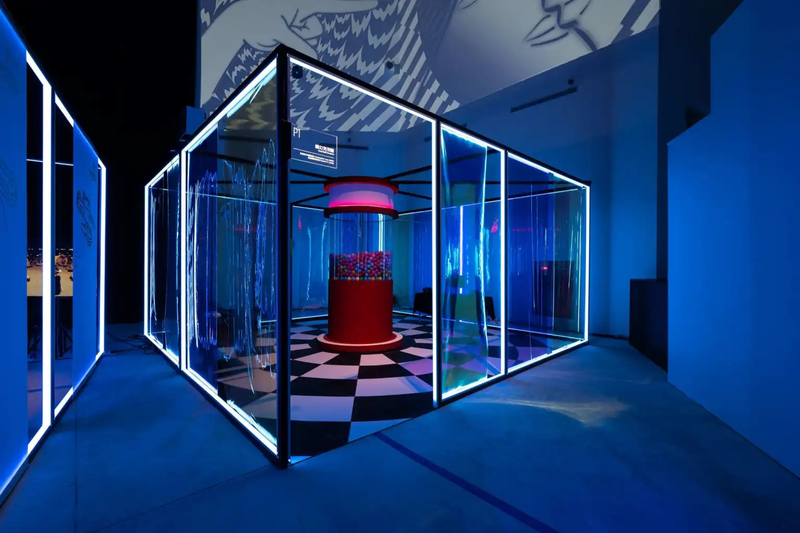
Question: It is difficult for ordinary people to experience XR in their daily lives. I think, for a program planner, it must be challenging to curate to the tastes of the general audience. So, I would like to ask, based on your observations, what kind of XR works can most reach the hearts and minds of the audience?
The audience can be divided into two categories: those who usually come to the VR Film Lab and those who specifically come to the film festival. The preferences of these two groups of audiences are different. The audience in the VR Film Lab prefers works that are visually intuitive, interactive, and highly entertaining. The film festival audience, on the other hand, maintains an open-mindedness and high acceptance of various content. However, regardless of the audience, the key to attracting them lies in the storytelling quality and sensory experience of the works. Especially for audiences experiencing VR for the first time, they are more prone to experiencing VR motion sickness. Therefore, we often remind the directors of Taiwanese original works that both the sensory experience and storytelling are important to the audience. After all, if the audience feels uncomfortable due to a poor experience, it is difficult for them to focus on appreciating the work itself. When both the technological presentation and storytelling reach a certain level of quality and balance, the audience's response is usually good.
Question: Flipping through the program booklet, it’s obvious that there is an overwhelming amount of content. I think everyone would want to see as much as possible, but time is always limited. Could you recommend one work to beginners who have never experienced XR, one work to veteran audiences, and one work to creators?
For audiences experiencing XR for the first time, I highly recommend "Eggscape." This work quickly breaks people's stereotypes about VR and is also a very enjoyable experience.
For experienced veteran audiences, I recommend "Darkening" This work analyzes the inner journey of a person with depression through sound interaction. Moreover, the interaction and storytelling are closely integrated in the work, and the design is clever. Personally, I really like it. After all, there are not many works that allow you to "scream." And to enhance the immersive experience for the audience, we have specially designed a dedicated space where the audience can freely scream and shout! It’s really very stress-relieving!
As for creators, I recommend "Flow." This creator won an award at the Venice Film Festival with this work, and in fact, this is his first XR work, so it is really impressive. Not only is the storytelling excellent, but the visual effects are also refined, and he used a lot of sound effects. Many creators may overlook the importance of sound in XR experiences, but this work perfectly demonstrates how sound complements the visuals and stimulates the audience's imagination. Even though some may think that 360 VR cannot bring anything new to the table, he has still managed create an impressive piece of work.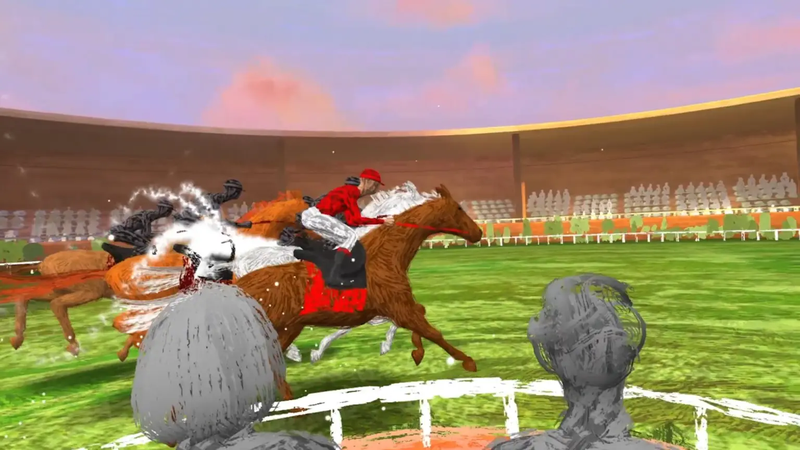
A fragment of the VR interactive work "The Night Scream" (Source: Kaohsiung Film Festival)
Question: Among the works this year, I see many creators using different devices and narrative techniques to give audience a more surprising experience. For you, what aspect do you value the most in these XR works?
For me, the most important aspect is the storytelling. Take director Chen Singing's "The Man Who Couldn't Leave" as an example. This work really moved me. Almost everyone who watched it as a VIP screening was moved to tears. I believe that storytelling techniques and effective storytelling are more important than pure technical implementation. Immersive experiences can seamlessly integrate with storytelling, bringing deep emotional experiences to the audience. For example, the works "Darkening" and "Flow" both clearly demonstrate why the experiences they want to create need to be done in the XR medium. Some works still follow the logic of traditional cinema, but immersive content should engage all of the audience's senses. How to help the audience fully immerse themselves in the story and be deeply moved involves the combination of storytelling skills and experiential technology, which I think is very important.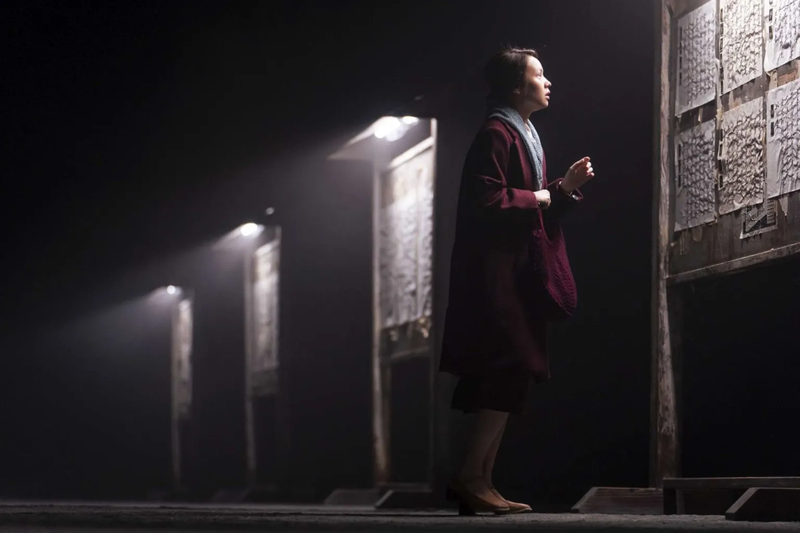
The VR work "The Man Who Can't Leave" directed by Chen Xinyi (Source: Kaohsiung Film Festival)
Question: In 2023, there have been significant changes in the VR/XR field, and AI's rapid progress has greatly changed people's lives. How do you view this era where the boundary between virtual and reality is becoming increasingly blurred?
I think it is an inevitable trend. Whether we are willing to accept it or not, it is already happening. Especially when we are in this technology field, we can directly see the astonishing speed of technological development. I think sooner or later, we will be affected by this trend of "boundarylessness" between virtual and reality. Therefore, I feel that instead of resisting this trend, it is better to try to understand how it will shape the future. To be honest, I am a bit pessimistic about this matter. Previously, I had a discussion with a French artist in residence about the development of technology. He mentioned that in France, most people seem to have a hostility towards technology, thinking that it may lead to the destruction of humanity or make people lazier. In contrast, he found that Taiwanese people seem to have a higher acceptance of technology and less strong awareness of personal data protection compared to Europeans. This not only shows cultural differences but also raises a question: Do we really understand and care enough about the development of technology and its impact? One of the works we released this year, "Consensus Gentium" demonstrates how easily hackers can invade and monitor our phones. So, I am indeed worried about whether we are ready to face the rapid changes in technology. On the other hand, when I see the potential that technology brings when used correctly, I still have hope for the future. So, I think this is a two-sided issue. Only when we are willing to deeply understand the implications brought on by the progress of technology can we truly be prepared. And government policies must also keep up with this trend, reflecting the concerns and needs of the people and making appropriate adjustments.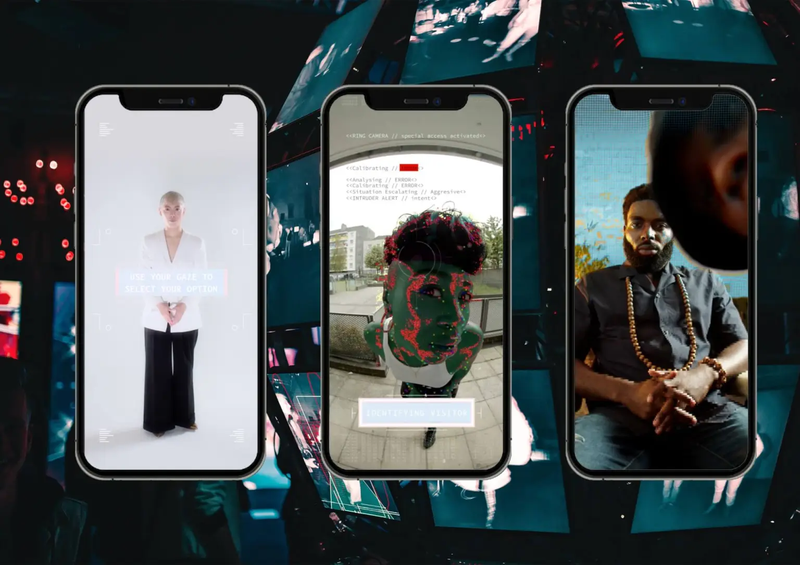
"Future Grand National" makes us aware of the dangers of technology in a very special way (Source: Kaohsiung Film Festival)
Question: As mentioned earlier, the festival has provided a lot of assistance to creators, and the results are evident. Can you give some advice to new aspiring creators who want to enter the XR field?
I recommend that aspiring creators should first understand the current trends before delving into the XR field. For example, watch more works from this year's film festivals to have an understanding of the development direction of this field. XR has actually expanded into various fields, from theater, dance, installation art to other art forms, so creators should clarify their positioning and why they choose XR as a narrative medium. After determining their direction, they can then try it out so that they won't feel pressured by the high threshold of technology or collaborating with other outstanding creators. When we observe international trends, such as in Europe and the United States, their development has already surpassed the current technological scope in Taiwan. But I think this does not mean that we have to blindly catch up. Creators can also choose their own path.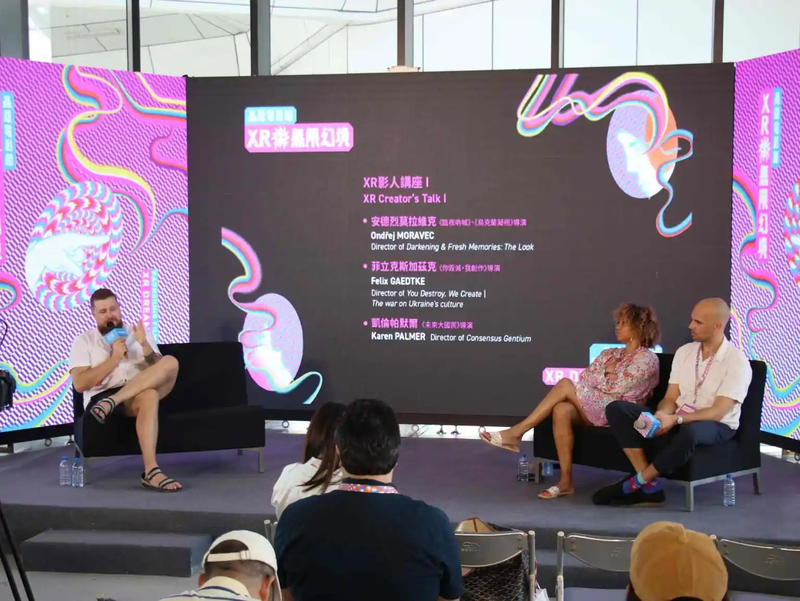
XR Infinite Fantasy also provides an extremely rich range of industry lectures and filmmaker talks (Source: Kaohsiung Film Festival)
Of course, the development of technology is astonishingly fast. For example, AI's emergence this year has once again changed the trajectory of technology development, and works based on AI have already started to make an appearance at the Venice Film Festival. Therefore, it is difficult for us to determine a specific creative direction because today's popular trends may be outdated tomorrow. But I think the most important thing is for creators to clearly know the story they want to convey and their own positioning. When you decide to use a certain medium to convey a story, you will naturally find the right audience and screening venues.
In this in-depth interview, we were able to gain a better understanding of the hard work and decision-making behind curating Kaohsiung Film Festival's XR Dreamland. The festival not only provides a visual and spiritual feast for the audience but also sets new standards for the XR creative field in Asia. Through the insights shared by program planner Shang-Chiao, we see an innovative, inclusive, and collaborative team whose passion and professionalism are the keys to the success of this festival. They not only bring new experiences to the audience but also provide a stage for creators to showcase their talents. We look forward to XR Dreamland continuing to uphold this spirit in the future, using the latest technology to see more inspiring works.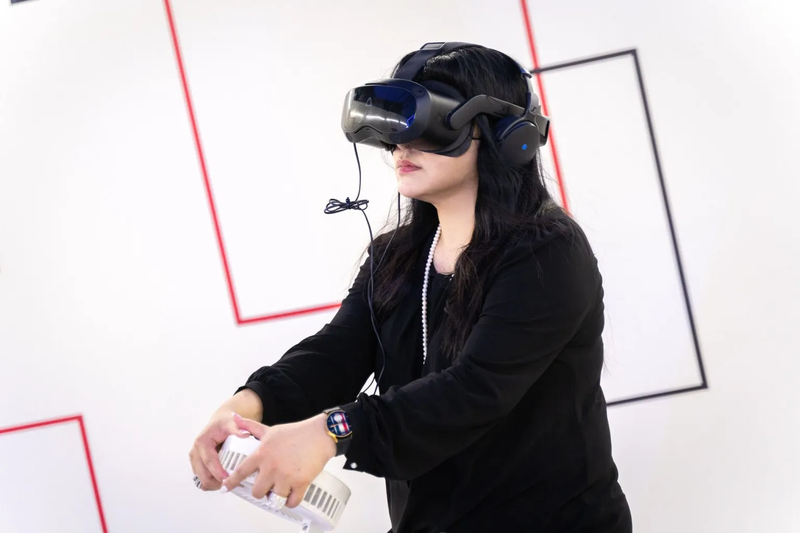
Even National Master Tang Qiyang wears VIVE Focus 3 to experience exciting content. I don’t know which work to watch? (Source: Tang Qiyang Astrology Help)
